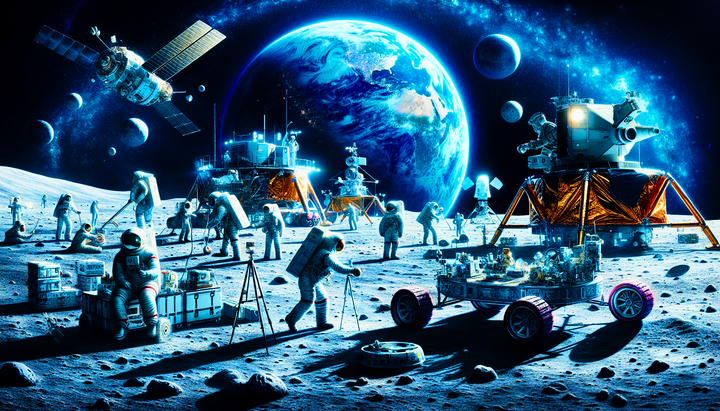In a monumental leap forward for lunar exploration, NASA has announced the discovery of 200 habitable regions on the Moon. This groundbreaking revelation opens up new possibilities for future manned missions and paves the way for the establishment of permanent lunar habitats. Join us as we delve into the details of this extraordinary discovery and explore its implications for the future of space exploration.
The Discovery: Using data collected by the Lunar Reconnaissance Orbiter (LRO), NASA scientists have identified 200 regions on the Moon that possess the essential ingredients for sustaining human life. These regions, scattered across the lunar surface, are characterized by the presence of water ice, favorable temperatures, and protection from harmful radiation. This discovery marks a significant step forward in our understanding of the Moon’s potential as a future outpost for human exploration and colonization.
Water Ice Deposits: One of the most exciting aspects of NASA’s discovery is the identification of water ice deposits within these habitable regions. Water is essential for supporting life and can also be used as a valuable resource for future lunar missions. The presence of water ice opens up the possibility of harvesting and utilizing it for drinking water, oxygen production, and fuel generation, significantly reducing the logistical challenges of sustained lunar habitation.
Favorable Environmental Conditions: In addition to water ice, the habitable regions identified by NASA exhibit favorable environmental conditions conducive to human survival. These regions experience milder temperature fluctuations compared to other parts of the Moon and offer protection from extreme heat and cold. Furthermore, the presence of relatively stable terrain makes them ideal candidates for the construction of lunar bases and habitats.
Implications for Future Exploration: NASA’s discovery of 200 habitable regions on the Moon has profound implications for the future of space exploration. These regions provide promising sites for future manned missions, offering astronauts a safe and hospitable environment to live and work. Moreover, the availability of water ice and other resources within these regions could significantly extend the duration and scope of lunar missions, enabling sustained human presence on the Moon for scientific research and exploration.
Potential for Lunar Colonization: Beyond scientific exploration, the discovery of habitable regions on the Moon raises the possibility of establishing permanent lunar colonies. With access to water ice and other essential resources, humans could potentially inhabit the Moon for extended periods, laying the groundwork for the development of a sustainable off-world civilization. This vision of lunar colonization represents a bold new frontier for humanity and underscores the importance of continued space exploration and innovation.
NASA’s groundbreaking discovery of 200 habitable regions on the Moon represents a significant milestone in humanity’s quest to explore and understand our cosmic neighborhood. With water ice deposits and favorable environmental conditions, these regions hold the promise of supporting future manned missions and potentially even long-term lunar colonization. 




